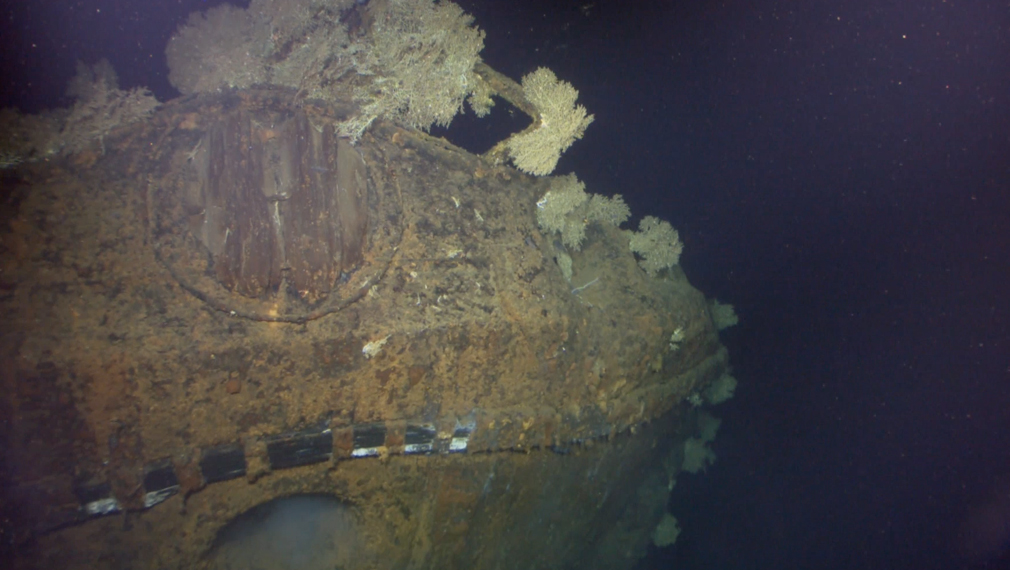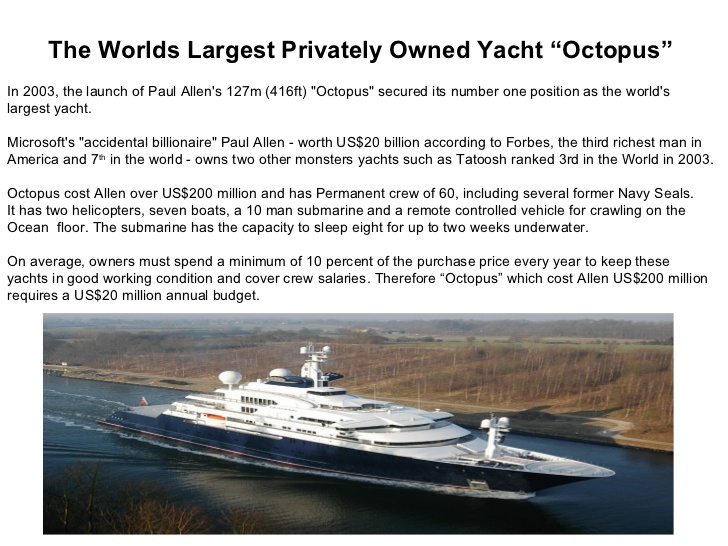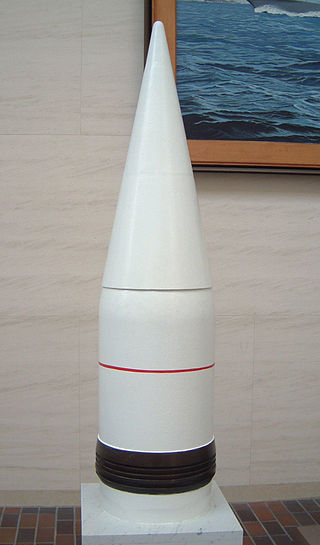Musashi and the Octopus
Editor’s Note: I rose at the farm this morning. It was an adventure with the ice that came yesterday morning. A tanker-truck slid off an overpass on I-66, clobbering all movement. On I-95, there was a 55-car pileup that included a fatality. I bided my time, checking the ice on the concrete of the patio until it vanished with the rising temperatures.
On a more local note, no turkey buzzards in immediate evidence, though I can see evidence that they have been back to roost on the back deck. They are a bit like Mr. Putin, I have come to realize. Though Russia has a total economy a little larger than California’s, Mr. Putin has an appetite for mischief even grander than Governor Brown. The larger consequences of that sort of behavior are being acted out in the South China Sea as the Chinese seize sovereign U.S. Navy property in international waters, beyond even their excessive territorial claims.
That there can be real and tragic results to international strife could not be more evident than in this story from 2015. Mac talked about the Japanese super-battleships often, and the efforts of his boss Jasper Holmes to locate and kill her. While IJN Yamato and the story of her demise is well known, the fate of her sister ship Musashi is less familiar. An accidental billionaire cleared that up for us. There are still secrets out there. Some of them are under 75-year seals of secrecy, for reasons best known to the men who wanted to ensure that their children would be doddering before they were revealed. New Year at 2020 could have some surprises for us. I guess we will see, and in the meantime have to rely on the kindness of billionaires to answer some of the questions.
– Vic
Musashi and the Octopus

(The pug nose of the mighty battship, IJN Mushashi. Less famous than her illustrious sister Yamato, she was sunk in the battle of the Leyte Gulf, the IJN attempt to defeat MacArthur’s landings in the Philippines. Photo Paul Allen).
In March of 2015 the word began to spread that the answer to one of Mac’s minor mysteries had been solved- the whereabouts of the sister ship to the mighty battleship IJN Yamato, the two largest such ships in history. Well, we knew in a general way where she was- underwater. Microsoft co-founder Paul Allen (and 51st richest man on earth) and his team of researchers looked for eight years to narrow things down. Finally, they located what appears to be the wreck of the IJN battleship Musashi in the Sibuyan Sea. His team used a Remotely Operated Vehicle (ROV) deployed from the mega-yacht Octopus to discover the hulk of what is almost certainly the remains of one of the two largest battleships ever built.

(Octopus is her own story- and nearly half as long as the Musashi!).
Musashi was laid down as the second hull in the Yamato-class of superbattleships after Japan withdrew from the League of Nations in 1934 and renounced the limitations on the size of warships mandated by the terms of the Washington Naval Treaty.
The sisters were the heaviest and most powerfully armed battleships ever constructed. Musashi had a length of 800-ft 6 inches on the waterline and 862-ft-10 inches length overall, with a displacement of up to 71,659 long tons. She carried a main battery of 18.1-inch guns, and a crew of 2,500 officers and men. I have pictures of the massive shells that flank the entrance to the former JIC-POA building at Makalapa- they were recovered from the naval base at Yokosuka and brought to Hawaii in the mid-1970s.
It is a sobering thing to see just how big they are at 3,219 pounds, and that (at a 45 degree elevation) they could travel 26 miles to flatten targets or penetrate the heaviest armor.

(Type 1 armor-piercing shell on display at the Yasakuni Shrine in Tokyo. Image courtesy Max Smith).
She was commissioned in 1942 and configured to serve as the flagship of the Combined Fleet, but did not join the fight until workups were completed in early 1943, a year from which I can’t seem to extricate this eccentric narrative. Her whereabouts was naturally of great interest to Jasper Holmes and Mac Showers on his Estimates Team at JIC-POA. Jasper had, by this time, acquired enough Lieutenants to establish a real 24-hour watch, and the location of fleet units was one of their prime tasks.
Mac may have some material on her in his oral history that we did not cover at Willow’s dark bar- we did talk about the death of Yamato, an event in which he still took great satisfaction.
I went back to Jasper’s account of tracking the disposition of IJN units, and recalled what Mac mentioned about his job- which evolved to an elaborate sanitization of the highly classified results of the JN-25 intercepts into a Secret-level bulletin that provided just enough deniability to protect sources and methods, a practice which became one of the main tools in the dissemination of combat intelligence in the Ocean Surveillance Information System of the Cold War.
But let’s see if we can actually get out of 1943, shall we?
Jasper accounted for Musashi this way. In early February of 1944, Navy reconnaissance flights over Truk lagoon revealed a heavy concentration of IJN fleet combatants, including ten cruisers, two carriers and Musashi. The Estimates Section provided SubPac of the locating data, and submarines were vectored toward the area to attack them as they departed. Musashi, Admiral Koga’s flagship, departed for Japan soon after the Bougainville reconnaissance flight.
In his memoir “Double Edged Secrets,” Jasper sums up the situation this way: “The Joint Chiefs of Staff on 12 March issued a directive that determined the course of the war in the Pacific for the next six months. MacArthur was directed to occupy Hollandia by 15 April, while Nimitz was to keep Truk and the other Caroline Islands neutralized and furnish MacArthur with fast carrier support. Nimitz was also directed to occupy Saipan, Tinian, and Guam, starting 15 June, and Palau starting 15 September.”
On 30 March Admiral Spruance with a large part of the Fifth Fleet hit Palau, 1,300 miles west of Truk. The missed the high value targets, since his carriers had been detected four days before the strike. The IJN evacuated their fleet units, though “100,000 tons of marus and about 150 Japanese planes were destroyed.”
As the fleet flagship Musashi pulled out of Palau, USS Tunny nailed her with a single torpedo, but did only light damage was inflicted on the battleship. She retired for repairs in time to return to the response to the allied landings on Leyte in the Philippines, Operation “Sho-Go.”
MacArthur began putting Army units ashore on the 20th of October, with the 7th Fleet providing naval gunfire support. It would be the last major fleet action by the IJN. A large Japanese surface force departed from Lingga Roads for Brunei, Borneo, on 18 October. FRUPac copied the radio traffic and passed the sanitized warning to the American fleet. The IJN divided their fleet into Southern (two battleships and a cruiser) and a Center Force five battleships and twelve cruisers). They sortied from Brunei on 22 October and set course across the Sulu Sea with the intention of entering Leyte Gulf through Surigao Strait.
On 20 October, the Northern Force, composed of four undermanned aircraft carriers, two carrier-battleships, and three light cruisers, sailed south from the Sea of Japan. They were not spotted until late on the 24th of October, northeast of the island of Luzon. That force was the diversion that so captivated ADM Bill Halsey, and he went for the bait and the struggle in Leyte Gulf was very much at issue.
U.S. submarines shadowed the Center Force until it entered the Sibuyan Sea, and on the same day Haley’s attention was diverted, carrier planes from the Third Fleet sank the mighty battleship Musashi, and that is where she remains, now discovered by Paul Allen’s team.
I don’t know what is next, except to photograph her for posterity. Nothing else is appropriate.
Here is how a mighty ship died:
At 0810, Musashi is spotted by a reconnaissance aircraft from USS Intrepid (CV-11) and a quick reaction strike is organized. Two hours later, at 10:27, eight Curtis Helldivers fall upon her, hitting Number 1 Turret with a 500-pound bomb with little effect. Two minutes later, Musashi is struck amidships by a torpedo dropped from a Grumman Avenger. The battleship’s hull integrity is breeched and she takes on water from the sea, developing a 5.5-degree list that is reduced by damage control counter-flooding. Two of the attacking aircraft are lost, but additional strikes are generated.
An hour and a half later, another eight Helldivers appear, and succeed in hitting the ship with two bombs, one a dud and the other successfully penetrating two decks before exploding above one of the engine rooms. Power was lost to the port inboard propeller shaft and the ship’s speed drops to 22 knots. Three minutes later, nine Avengers converge on Musashi’s port and starboard, putting three torpedoes into the port side. Machinery rooms begin to flood. More counter-flooding keeps her upright, but battleship begins to go down by the head, losing six feet of freeboard. A misfire in the center gun of Number 1 Turret puts the battery out of action.

(Musashi down by the bow after the air attacks, shortly before her sinking. Photo IJN via USN).
At 13:31, the ship was attacked by 29 aircraft from the fleet carriers Essex (CV-9) and Lexington (CV-16). Grumman Hellcats strafe the deck and Helldivers score four more bomb hits forward. Then four more torpedoes strike her forward, and the seawater floods in. The bow is now down thirteen feet, though she is still making twenty knots in a vain attempt to get to shore and beach herself.
Then a respite for two hours and Musashi’s crew attempts to combat the damage- but two hours later nine additional Helldivers from Enterprise (CV-6) appear with 1,000-pound armor piercing bombs. They put four of them into the deck, and the battleship takes three more torpedo hits, opening her starboard bow to the sea. Her speed of advance is now just 13 knots, and at 15:25, 37 aircraft from Intrepid, Franklin (CV-13) and Cabot (CVL-28) deliver 13 bombs and 11 more torpedoes.
Rudder jammed, speed down to six knots, listing ten degrees, the battleship has absorbed an incredible 19 torpedoes and seventeen bomb hits.
She is now headed north, with a heavy cruiser and two destroyers in escort as frantic efforts are made to correct the list and get her close enough to shore to beach her hull. Additional intentional flooding causes her to lose power and she goes dead in the water. At 19:15 her crew is ordered to prepare to abandon ship. The battle flag is lowered and the portrait of the Emperor is removed. Fifteen minutes later, the list has increased to 30 degrees, and she capsizes at 19:36, going down in 4,430 feet of water.
1,376 of her 2,399-man crew were rescued. The skipper, Rear Admiral Toshihira Inoguchi, goes down with the ship and remains with her, found after 71 years by Paul Allen and the crew of the Octopus.
There will be no further operations by Octopus (or anyone else) on the battleship. She is a war grave, after all.
Copyright 2015 Vic Socotra
www.vicsocotra.com
